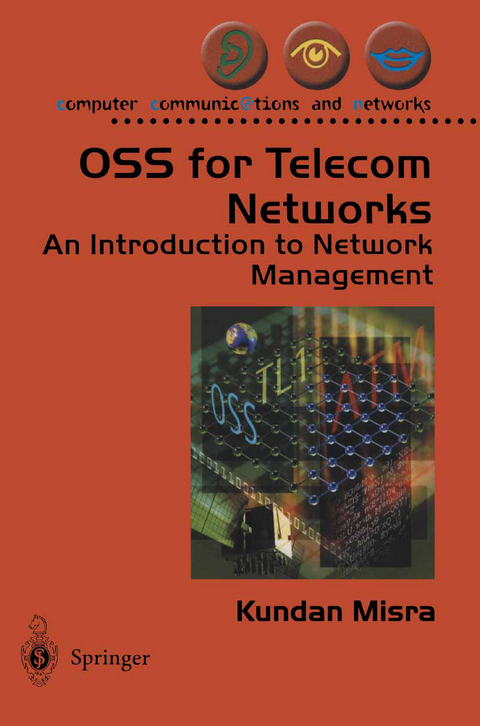
OSS for Telecom Networks
An Introduction to Network Management
Seiten
2004
|
Softcover reprint of the original 1st ed. 2004
Springer London Ltd (Verlag)
978-1-85233-808-4 (ISBN)
Springer London Ltd (Verlag)
978-1-85233-808-4 (ISBN)
Modern telecom networks are automated, and are run by OSS software or "operational support systems”. OSS software is also responsible for issuing commands to the network infrastructure to activate new service offerings, commence services for new customers, and detect and correct network faults.
Modern telecom networks are automated, and are run by OSS software or "operational support systems”. These manage modern telecom networks and provide the data that is needed in the day-to-day running of a telecom network. OSS software is also responsible for issuing commands to the network infrastructure to activate new service offerings, commence services for new customers, and detect and correct network faults.
The capabilities of OSS software are central to the service features that can be offered by telecom service providers. On the other hand, the limitations of OSS software translate into limitations on service offerings. It is important for telecom consultants, sales people and managers to understand OSS software. This book introduces those systems to non-technical readers, and will be essential reading for telecommunications professionals who need an easy-to-read overview of OSS systems, and also for those taking advanced undergraduate, postgraduate, and other courses in telecommunications.
Modern telecom networks are automated, and are run by OSS software or "operational support systems”. These manage modern telecom networks and provide the data that is needed in the day-to-day running of a telecom network. OSS software is also responsible for issuing commands to the network infrastructure to activate new service offerings, commence services for new customers, and detect and correct network faults.
The capabilities of OSS software are central to the service features that can be offered by telecom service providers. On the other hand, the limitations of OSS software translate into limitations on service offerings. It is important for telecom consultants, sales people and managers to understand OSS software. This book introduces those systems to non-technical readers, and will be essential reading for telecommunications professionals who need an easy-to-read overview of OSS systems, and also for those taking advanced undergraduate, postgraduate, and other courses in telecommunications.
1 Introduction.- 2 Network Management OSS Overview.- 3 ATM Network Management — The ATM Forum Model.- 4 Network Management Using SNMP.- 5 Network Management Using Telnet/CLI and TL1.- 6 Service Provisioning and Activation.- 7 Implementing Service Level Management.- 8 Telemanagement Forum: TOM.- 9 Telemanagement Forum: eTOM.- 10 Network Inventory Management.- 11 Configuration Management.- 12 Fault Management.- 13 Traffic Management.- 14 Web-based Telecommunications Systems Management.- Abbreviations.
| Erscheint lt. Verlag | 9.8.2004 |
|---|---|
| Reihe/Serie | Computer Communications and Networks |
| Zusatzinfo | 128 Illustrations, black and white; XIV, 302 p. 128 illus. |
| Verlagsort | England |
| Sprache | englisch |
| Maße | 155 x 235 mm |
| Themenwelt | Mathematik / Informatik ► Informatik ► Netzwerke |
| Informatik ► Theorie / Studium ► Künstliche Intelligenz / Robotik | |
| Informatik ► Weitere Themen ► Hardware | |
| ISBN-10 | 1-85233-808-3 / 1852338083 |
| ISBN-13 | 978-1-85233-808-4 / 9781852338084 |
| Zustand | Neuware |
| Haben Sie eine Frage zum Produkt? |
Mehr entdecken
aus dem Bereich
aus dem Bereich
Buch | Softcover (2024)
REDLINE (Verlag)
20,00 €
Eine kurze Geschichte der Informationsnetzwerke von der Steinzeit bis …
Buch | Hardcover (2024)
Penguin (Verlag)
28,00 €


